MAOI Tyramine Checker
How This Tool Works
This tool calculates tyramine content in your selected foods based on scientific data. When on MAOIs, even small amounts of tyramine can cause dangerous blood pressure spikes. The calculator shows total tyramine intake and whether it's likely to be safe for you.
Select Your Foods
Select the foods you're considering eating. Remember: even small amounts of high-tyramine foods can be dangerous.
When you’re on MAOIs for depression, the biggest danger isn’t the medication itself-it’s what’s on your plate. Most people know to avoid aged cheese. But what about the miso soup you had for lunch? The soy sauce drizzled on your stir-fry? The pickled beets in your salad? These aren’t just minor risks. They’re silent triggers that can spike your blood pressure to dangerous levels-sometimes within minutes.
Why Tyramine Is a Silent Threat
MAOIs work by blocking an enzyme called monoamine oxidase. This enzyme normally breaks down excess tyramine, a compound formed when proteins in food break down during aging or fermentation. Without it, tyramine builds up in your bloodstream. That causes a sudden, massive release of norepinephrine, which can send your systolic blood pressure soaring past 180 mmHg. That’s not just high-it’s an emergency. Symptoms include pounding headache, blurred vision, chest pain, nausea, and in worst cases, stroke or heart attack.It’s not just cheese. In fact, cheese is just the tip of the iceberg. A 2022 study from Harvard Medical School found that patients on MAOIs are far more likely to have a hypertensive crisis from fermented soy, cured meats, or even tomato paste than from cheddar or blue cheese. The reason? Many people don’t realize these foods are high in tyramine-or they assume "natural" or "healthy" means safe.
Hidden Tyramine Sources You’re Probably Eating
Here’s what you need to avoid-not because it’s unhealthy, but because it’s deadly when paired with MAOIs:- Dry-aged salami and pepperoni: 80-115 mg/kg tyramine. Even a thin slice can trigger a reaction.
- Smoked fish: 75-90 mg/kg. Includes lox, smoked salmon, and kippers.
- Miso paste: 60-85 mg/kg. Found in soups, marinades, and glazes.
- Soy sauce: 45-70 mg/kg. Used in 90% of Asian restaurant dishes.
- Kimchi and sauerkraut: 40-75 mg/kg. Fermented cabbage is a major culprit.
- Worcestershire sauce: 25-45 mg/kg. Hidden in meatloaf, Bloody Marys, and salad dressings.
- Fish sauce: 35-55 mg/kg. Common in Thai, Vietnamese, and Filipino cooking.
- Marmite or Vegemite: 40-60 mg/kg. Spread on toast? That’s a risk.
- Tomato paste: 20-35 mg/kg. Concentrated during cooking-more tyramine than fresh tomatoes.
- Draft beer and sherry: 15-75 mg/L. Draft beer is worse than bottled because it’s exposed to air longer during dispensing.
Even refrigeration doesn’t fix this. Tyramine doesn’t disappear once it’s formed. In fact, tofu can go from 5 mg/kg to 25 mg/kg in just three days in your fridge. That’s why "fresh" doesn’t mean safe.
Why Restaurants Are a Minefield
A 2023 investigation found that 7 out of 10 popular chain restaurants couldn’t tell you if their menu items contained soy sauce, Worcestershire, or fish sauce-even when asked directly. One patient on Reddit, "NeurotransmitterNancy," ended up in the ER after eating miso soup at a Japanese restaurant. She didn’t know it was on the menu. The server didn’t know either.Restaurant staff aren’t trained on MAOI safety. They don’t know what tyramine is. They assume "low-sodium" or "organic" means safe. It doesn’t. A 2022 survey of 347 MAOI users found that 32% of their dietary slip-ups came from restaurant meals. The most common hidden sources? Soy sauce in stir-fries, Worcestershire in burgers, and fish sauce in noodle bowls.
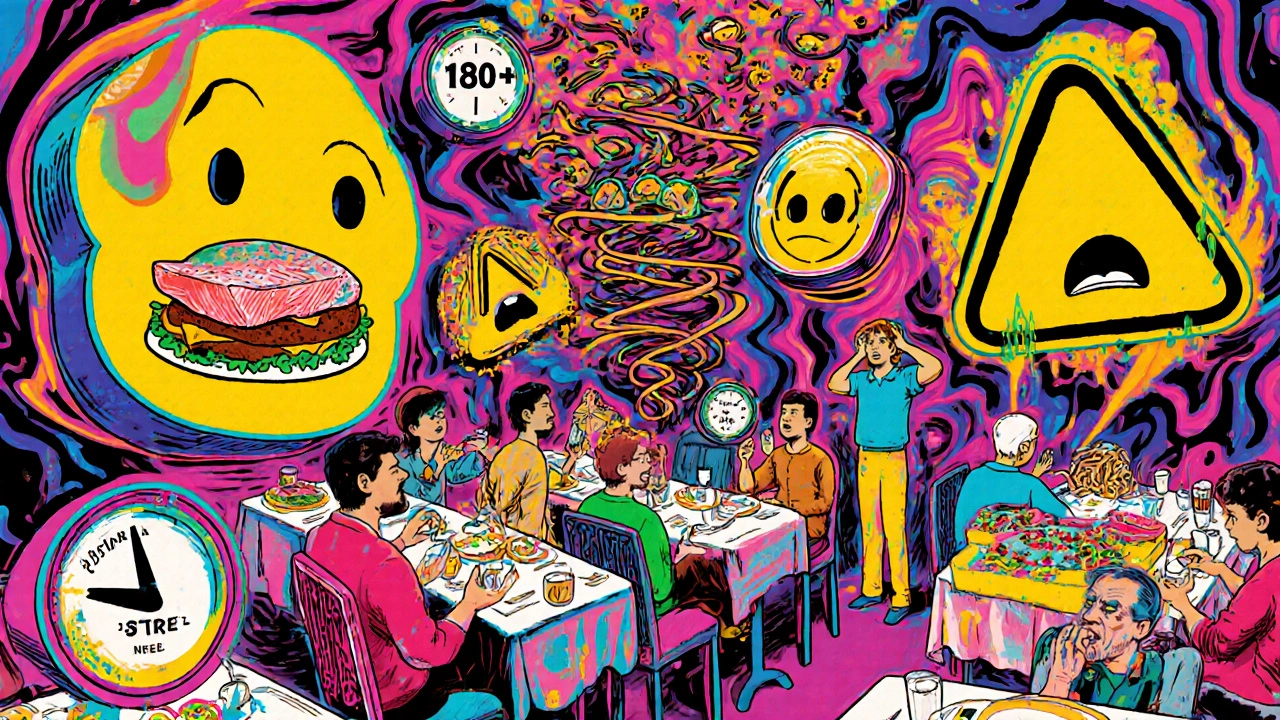
What About Soy? The Debate
There’s disagreement among experts. Some, like Dr. Sarah R. Lieber at Columbia University, say all fermented soy must be avoided. Others, like Dr. Brian Staiger from GoodRx, say small amounts-like one tablespoon of soy sauce-may be okay for some patients. But here’s the problem: there’s no way to know if you’re one of those patients. Tyramine sensitivity varies wildly. One person can eat miso soup without issue. Another has a blood pressure spike from a single teaspoon.The European Food Safety Authority says modern fermentation methods have cut tyramine levels by 30% compared to 20 years ago. That’s true. But it doesn’t mean it’s safe. The same study warns: "Individual sensitivity varies significantly, making strict avoidance the safest approach." And when your life is on the line, "maybe" isn’t a strategy.
Real People, Real Consequences
A Depression Alliance survey found that 68% of MAOI users had at least one dietary mistake in their first six months. Most didn’t know they were at risk. Overripe bananas? 28% of respondents triggered a reaction from them. Leftover meat in the fridge for three days? Another 24%. Social isolation is common-41% of patients said they canceled plans because they couldn’t eat what others were having.But here’s the flip side: 79% of those same patients said the dietary restrictions were worth it. MAOIs work when nothing else does. For people with treatment-resistant depression, they’re often the only option that brings relief. The trade-off is hard, but for many, it’s the only path back to feeling normal.

How to Stay Safe
You don’t have to live in fear. You just need to be smart.- Read labels like a detective. Look for: fermented, aged, cured, smoked, pickled, marinated, or yeast extract.
- Carry a warning card. 87% of ER doctors prefer patients show a printed MAOI dietary warning card during emergencies. Print one from the Mayo Clinic website and keep it in your wallet.
- Call restaurants ahead. Ask: "Does this dish contain soy sauce, fish sauce, miso, Worcestershire, or cured meats?" If they hesitate, don’t eat it.
- Use fresh, unprocessed foods. Fresh chicken, plain rice, steamed vegetables, and fresh fruit (except overripe bananas) are safe.
- Check expiration dates. Tyramine increases as food ages. If it’s past its prime, throw it out.
- Get trained. The University of Michigan requires 45 minutes of diet counseling before starting MAOIs. Ask your doctor for a referral to a psychiatric dietitian. Most insurance covers it.
What’s Changing?
Good news: science is catching up. In 2023, the FDA approved a new enzyme supplement called TyraZyme that reduces tyramine absorption by 58% in clinical trials. It’s not a free pass-but it could mean fewer restrictions in the future.There’s also the selegiline patch (Emsam), which allows up to 10 grams of tyramine daily at the lowest dose. That’s more than most people eat in a week. It’s not for everyone, but it’s an option if you’re struggling with diet restrictions.
And in pilot programs at Massachusetts General Hospital, researchers are testing genetic markers to identify patients who naturally break down tyramine faster. One day, your DNA might tell you how strict your diet needs to be.
Bottom Line
MAOIs are powerful. They save lives. But they demand respect. Cheese isn’t the enemy. It’s just the most famous one. The real danger is in the sauces, the pickles, the fermented snacks, the leftovers, the "healthy" foods you assume are safe.If you’re on MAOIs, your diet isn’t a suggestion-it’s a lifeline. Learn the hidden sources. Ask questions. Carry your warning card. And don’t let shame stop you from speaking up. You’re not being difficult. You’re being smart.
There’s life after MAOIs. But it starts with knowing what’s on your plate-and what’s not.
Can I eat yogurt if I’m on MAOIs?
Yes, plain, fresh yogurt is generally safe. Tyramine builds up during aging and fermentation, but most commercial yogurts are fresh and not aged. Avoid yogurt with added soy, miso, or fermented fruit toppings. Stick to plain, unsweetened, and check the ingredient list for any fermented additives.
Are pickles safe on MAOIs?
It depends. Fermented pickles (like sauerkraut or traditional dill pickles made with brine and time) contain tyramine-30-75 mg/kg. Vinegar-pickled pickles (like quick-pickled cucumbers made with vinegar and refrigerated) are usually safe. Check the method: if it says "fermented," avoid it. If it says "vinegar-pickled" and is refrigerated, it’s likely okay in small amounts.
Can I drink wine on MAOIs?
Most wines are risky. Red wine contains 20-40 mg/L tyramine. Sherry and vermouth are worse-up to 75 mg/L. Even a glass can trigger a reaction. Bottled wine is slightly safer than draft, but still not recommended. If you’re desperate, talk to your doctor about the selegiline patch (Emsam), which allows limited alcohol intake at low doses.
What if I accidentally eat something high in tyramine?
Monitor your symptoms. If you feel a sudden headache, chest tightness, blurred vision, or rapid heartbeat, check your blood pressure immediately. If it’s over 180/110, call 911. Don’t wait. Even if you feel fine, contact your doctor. They may advise monitoring or a visit. Keep your emergency card handy-it helps ER staff act faster.
How long do I need to avoid tyramine after stopping MAOIs?
At least 14 days. MAOIs stay active in your body for up to two weeks after your last dose. Even if you feel fine, your enzyme levels haven’t fully recovered. Jumping back into fermented foods too soon can still trigger a hypertensive crisis. Wait the full 14 days before reintroducing any high-tyramine foods.
Are there any safe alternatives to soy sauce?
Yes. Coconut aminos is a popular, tyramine-free substitute made from coconut sap. It has a similar salty-sweet flavor and works well in stir-fries and marinades. Look for brands labeled "non-fermented" and check ingredients-some add soy or yeast extract. Tamari made without wheat or fermentation (rare) may also be safe, but always verify with the manufacturer.
Why do some people say they eat these foods without problems?
Some people have naturally higher levels of monoamine oxidase and can break down tyramine faster. Others may eat very small amounts or foods with lower concentrations. But you can’t test your sensitivity safely. One person’s tolerance doesn’t mean it’s safe for you. The risk isn’t worth it. The goal isn’t to test your limits-it’s to stay alive.
Can I eat fermented foods after I stop MAOIs?
Yes, but wait at least 14 days after your last dose. Once your body has cleared the medication and your monoamine oxidase enzyme has returned to normal function, you can gradually reintroduce these foods. Start with small amounts and monitor how you feel. If you experience any symptoms like headache or dizziness, stop and consult your doctor.
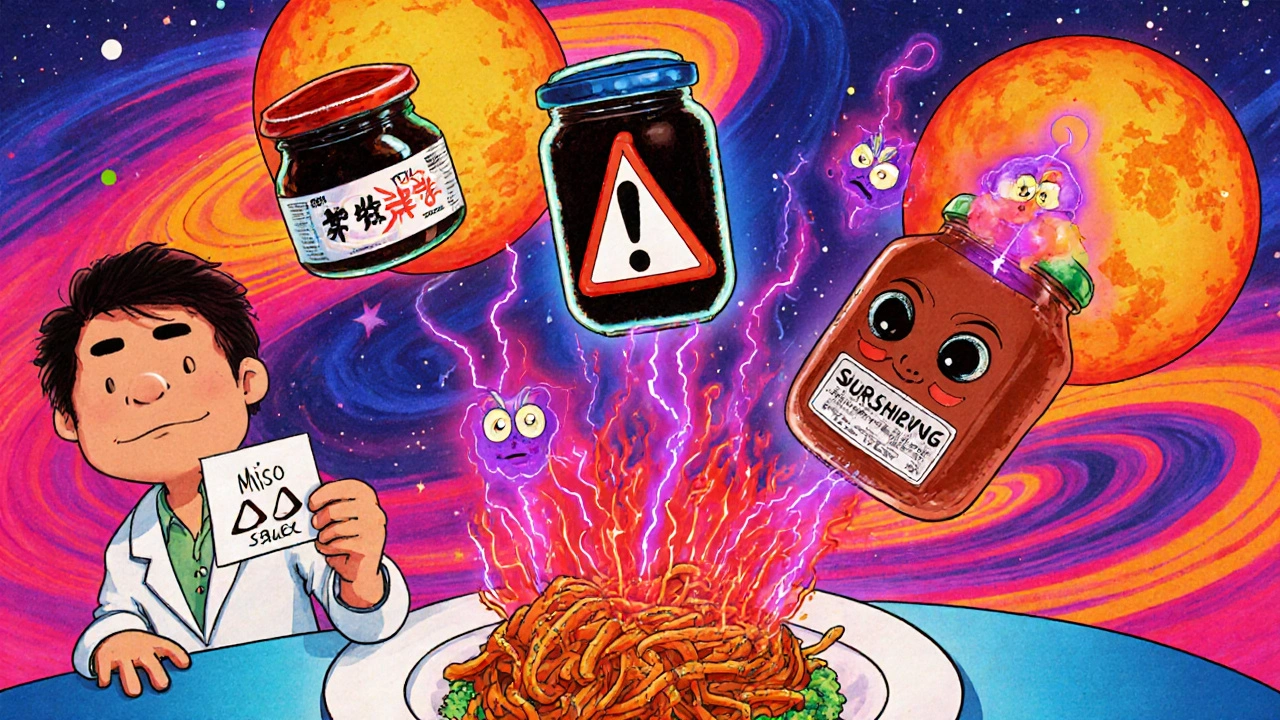
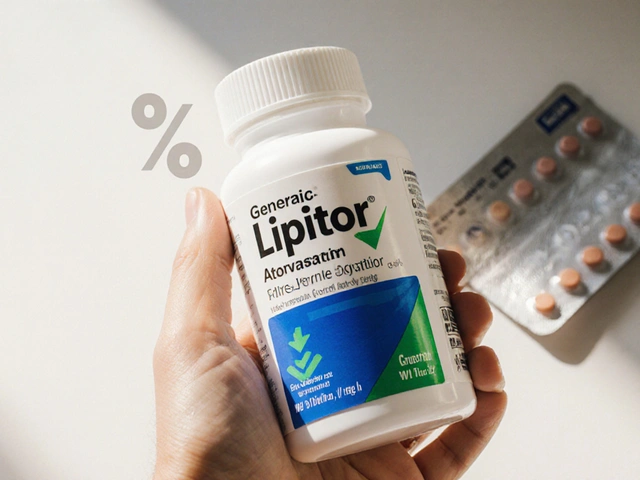
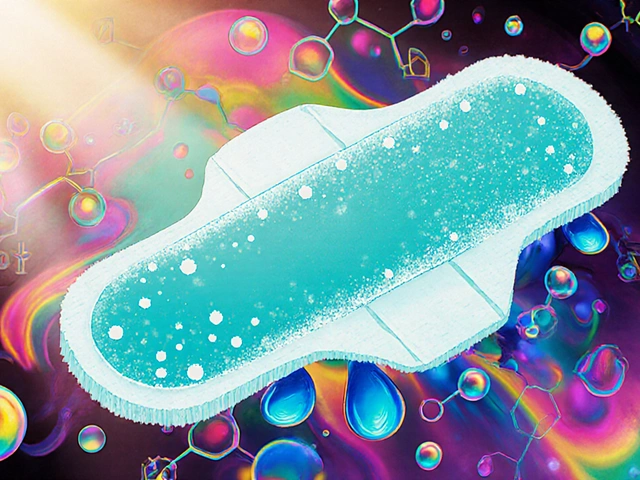
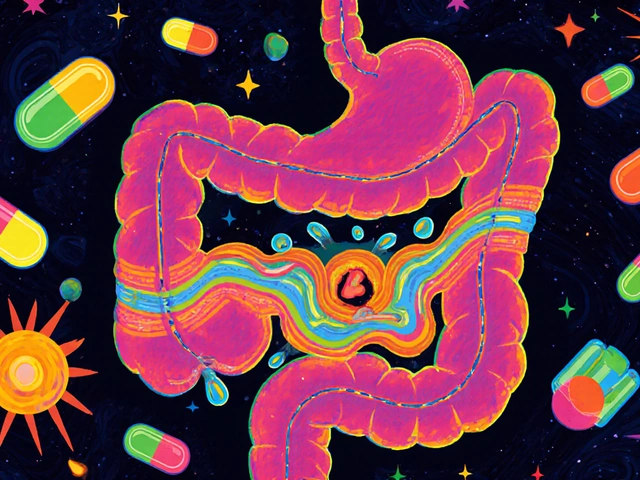

Daisy L
November 21, 2025 AT 01:30Okay, but let’s be real-why is the FDA letting this stuff slide? We’re talking about a medical emergency hiding in your soy sauce bottle, and nobody’s labeling it like a damn hazard sign?! I’ve seen people eat kimchi like it’s salad and then wonder why they’re in the ER. This isn’t ‘dietary advice,’ this is a public safety failure. Someone needs to sue the food industry for deceptive labeling. I’m not being dramatic-I’ve watched a friend almost die because a server said ‘it’s just broth.’
Anne Nylander
November 21, 2025 AT 02:28you got this!! 💪 i know it sounds overwhelming but you’re not alone. i was on maois too and i thought i’d never eat out again-but now i carry my card, call ahead, and even taught my mom how to read labels. you’re doing amazing. small steps count. you’re stronger than you think. 🌟
Noah Fitzsimmons
November 21, 2025 AT 15:53Oh wow. So you’re telling me the same people who think ‘organic’ means ‘safe’ are now going to be the ones who accidentally poison themselves with miso? I’m shocked. Truly. I mean, I didn’t know the human race was this good at self-sabotage. Congrats, America. You’ve turned your kitchen into a Russian roulette table with extra soy sauce.
Eliza Oakes
November 22, 2025 AT 11:12Wait-so you’re saying tomato paste is dangerous? But I thought it was ‘heart-healthy’? And now I’m supposed to believe that pickles are a death trap? I mean, I’ve been eating this stuff since I was 5. Are you telling me my grandma’s pickled beets are basically liquid landmines? I’m not even mad-I’m just confused. This feels like a cult. Someone send me a pamphlet titled ‘How to Survive Without Flavor.’
Clifford Temple
November 23, 2025 AT 23:31This is why we need to stop letting foreigners dictate our food. Soy sauce? Kimchi? Who even eats this stuff? Back in my day, we had steak, potatoes, and a damn sandwich. No fermented nonsense. If you can’t handle basic American food, maybe you shouldn’t be on MAOIs. This isn’t ‘dietary freedom’-it’s cultural surrender.